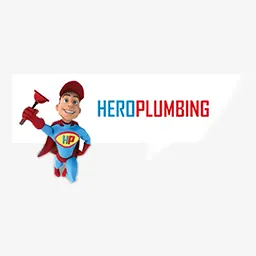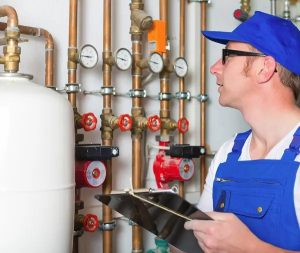Table Of Contents
- Toilet Systems
- The Working Mechanism Of A Toilet
- Components Of A Toilet And Their Functions
- Commonly Used Types Of Toilets
- Factors To Consider When Buying a Toilet
- Vents, Waste Pipes, And Pressure-Assist
- Tips On How To Maintain A Toilet
- Common Toilet Issues And How To Correct Them
- Choose The Proper Toilet For Your Space
Toilet Systems
Toilets are sanitary plumbing fixtures used for human waste disposal. Toilets remain an engineering feat of simplicity, with even the most basic modern toilets utilising only a few mechanical components. Without a toilet, no dwelling can be called habitable.
Toilets are bound to experience issues with time, including clogs, leaks, and weak flushing. It is therefore essential to understand how a toilet works so that you can comfortably diagnose and fix simple issues without having to call a plumber.
However, remember that you can still seek professional help if your toilet is experiencing issues surpassing your DIY skills. In this post, we’ll look at how toilets function, their mechanisms, and a variety of other toilet-related subjects.
The Working Mechanism Of A Toilet
Toilets discharge their contents into public sewers or private septic systems. The toilet has two primary purposes, regardless of where it empties. One of these duties is to dispose of human waste via flushing valves. The second function is to keep sewage gases from entering a house. Toilets rely on both gravity and siphoning to flush away waste.
Toilets have been designed to be more efficient in recent years. For example, they have an interior trap that helps to maximise water flow during flushing. Most toilets have a syphon toilet flushing mechanism, which employs an inverted U-shaped pipe to prevent water from seeping from the cistern into the pan between flushes. A ball-float system may not be feasible in slimline cisterns.
Instead, such cisterns use a Torbeck valve with a small float and a very short float arm or a vertical valve with a float cup that fits around the centre column. Most modern toilets have a dual-flush system with a two-part button or ‘flush-and-hold’ mechanism to save water. A valve-operated flush mechanism substitutes the siphonic system in both circumstances and is actuated by a push button, which is usually located on the cistern lid.
Unfortunately, toilets with this type of mechanism are difficult to maintain or repair, and difficulties frequently necessitate the purchase of a replacement part. Toilets also include vent and waste pipes, which play an essential role in waste disposal. When you understand how toilets work, you’ll realise how important it is to keep them in working order.
Components Of A Toilet And Their Functions
Water is considered the fuel that allows a toilet to function. The water contained in toilet tanks ensures that waste is correctly disposed of. A toilet without water is analogous to a car without gas or a phone without a battery charge. A supply tube brings water into the toilet tank. On one end, the supply tube is typically attached to the toilet; on the other, it is connected to the main pipe. The tank also features fill valves that open after flushing to allow the toilet tank to refill.
When the tank is full, it also stops the flow of water into it. The toilet float is another vital toilet component. You can use a cup-style float or a ballcock float. As the name implies, a float floats on the water and closes the toilet fill valve once it reaches the desired level. The float releases the valve for the tank to refill whenever the water level in the toilet tank lowers after flushing. Every flush cycle involves this step.
The toilet tank also houses a flush valve. When you pull the flushing handle, it activates it. It consists of either a plastic canister or a rubber flapper. The toilet tank entrance is opened by lifting the flapper located at the bottom of the toilet tank. As the valve is raised, water pours down into the toilet bowl. It lets a large amount of water flow quickly into the toilet bowl, flushing it thoroughly.
Water can enter the toilet bowl through gaps in the rim. As water funnels into the toilet bowl, it rises over the top of the trap and travels down the drain pipe. As the flush water runs into the bowl, the drain pipe fills up, generating a suction that compels the bowl to discharge its contents. As a result, a thorough toilet flush necessitates a large amount of water flowing swiftly into the toilet bowl.
Commonly Used Types Of Toilets
Many individuals are making better choices for the environment regarding systems, appliances, and even toilets. The focus is on water conservation, and when toilet usage accounts for 30% of total water consumption in one family per year, any reduction has a significant impact. It allows you to save money on your water bills. While there are many more, here are a few types of toilets that are currently being implemented.
Gravity toilets
Gravity toilets are the leading players in this field. Most homes use a gravity-flushing toilet, which draws water from the bowl when flushed. These specific toilets have come a long way since their inception, and they now come in various patterns and styles. People select them because that is what they are familiar with, but alternative options are available, as shown below.
Toilets with vacuum assistance
The vacuum-assist toilet is a less common toilet style. It produces a vacuum in the trap, which is activated when you flush.
Toilets with buckets
When you flush, a bucket sits on top of the toilet’s tank, and instead of filling the tank, it dips into it and then flows into the toilet bowl.
Dual flush toilets
These toilets are standard in Australia and certain European nations. Dual flush toilets come with two flushing options, allowing you to choose the type of flush you want. One button does a 4-litre flush, while the other performs a full flush.
Basically, you store the latter for when there is more to flush. When compared to regular toilets, installing a dual flush toilet in your space could allow you to save up to 26% on your water consumption.
Factors To Consider When Buying a Toilet
The design of the toilet that is appropriate for your bathroom isn’t the only consideration. Here are a few more critical points to consider when buying a toilet for your space.
The seat
Soft-closing toilet seats are a convenient and quiet alternative to regular toilet seats in many modern bathrooms. Because of their sleek and practical design, these toilet seats shut smoothly and steadily.
The main advantages of a soft-closing seat are that it produces less noise and facilitates safety if you have small children. Soft-closing seats are also easy to maintain since they generally include a rapid release mechanism that allows you to entirely remove the toilet seat.
Available space
Before making a purchase, you must first establish how much room you have to install a new toilet. The rough-in distance between the waste outlet and the wall is one of the most essential of these parameters.
The usual S-trap distance is 140mm, although older homes may have a gap of around 180-240mm, which may be readily remedied with a back-to-wall toilet. If you happen to be short on available space, there are many tiny toilets on the market. A wall-mounted or wall-faced toilet is a good choice for small bathrooms since it takes up the least amount of space.
Plumbing
When purchasing a new toilet, keep in mind whether or not you’ll need to replace your current plumbing system, especially if you choose a toilet with an in-wall cistern. Installing an in-wall cistern might be difficult due to space constraints, and it can also be pricey. Before making any final selections, consult with a plumber or a bathroom product specialist to learn about your alternatives.
Water conservation
The Australian government has implemented a WELS (Water Efficiency Labelling and Standards) program to reduce household water use. It calculates the quantity of water used per flush using a star rating system. A complete flush with a 3-star rating uses around 6L of water and a half flush around 3L. A full flush with a 4-star rating consumes about 4.5 litres of water, while a half flush uses about 3 litres.
If you are building a new dwelling, you should install a toilet with a 4-star rating. You may install a 3- or 4-star toilet if you’re conducting a modest remodelling or just changing the toilet. In the same vein, if you’re undertaking a significant renovation, check with your local council to determine if you need a 4-star toilet.
Vents, Waste Pipes, And Pressure-Assist
For your toilet to work correctly, you or a professional must adequately fit the vent and waste lines. It’s best if the toilet waste pipe isn’t too steep or too large. If this is the case, the flush water will not fill the waste pipe, resulting in a lack of effective suction.
The toilet waste pipe should have a suitable downward angle for the flush water to drain correctly. Because of the faulty plumbing in older homes, most contemporary toilets with low-flow mechanisms do not work effectively. Installing a pressure-assist toilet is the best alternative in these situations.
Rather than employing a flapper, a pressure-assist toilet uses pressured air in the water tank. Water compresses the air, and the resulting pressure drives water to flow quickly into the toilet bowl. As a result, the waste pipe fills up, and the flush is done. The toilet waste pipe must be adequately ventilated.
Venting permits air to flow into the waste pipe, preventing the suction created by flushing from syphoning water from the trap or stopping wastewater flow. Vents can get clogged for a variety of reasons. If your vents get clogged, the toilet will not flush correctly, indicating a clogged toilet waste line. Attempting to clear a clog by plunging the toilet or using an auger may not be successful.
Tips On How To Maintain A Toilet
Toilet maintenance isn’t everyone’s favourite duty; however, ensuring the toilet keeps running smoothly is necessary. To avoid overflows, wasted water, and flushing failure, ensure to follow the guidelines below.
- Clean the pipes, flushing holes, and filters regularly. Use soapy water or a neutral detergent to clean the pipes and flushing holes.
- Ensure that only flushable items are flushed down your toilet to prevent frequent clogging. You can educate your children on what flushable items include to be safe. Moreover, always check to see if the toilet’s return air hole is clogged.
- Cleaning the cover and seat ring with a soft cloth is recommended; cleaning with strong acid, strong carbon, or decontamination powder is not permitted as they can damage your toilet.
- Your toilet should not be placed in direct sunlight, near a direct heat source, or exposed to oily smoke, as this will cause yellowing.
- With time, the fastening faucet will loosen due to frequent turning of the toilet cover; kindly tighten the cover nut.
- Since toilets are used a lot, be sure to clean your toilet regularly to prevent discolouration.
Common Toilet Issues And How To Correct Them
The majority of toilet issues are simple to resolve. You can fix most toilet issues without the need for a plumber. The only difficult concerns to resolve are cracks in the toilet porcelain, which might call for a replacement, and large obstructions in the toilet drain. Backflow of wastewater into the toilet tank and poor flushing are common indications of a faulty flapper or float. It’s possible that your toilet isn’t flushing entirely because there isn’t enough water supply in the bowl.
You can easily resolve this problem by altering the float level. The float level mechanism will determine how it is adjusted. The rod that links the toilet fill valve and the cup float must be shortened in cup float devices. Rotate the float ball clockwise to shorten the armature that supports the ball in ball float devices. Adjustable screws are used to control some fill valves.
You may adjust the float by rotating the screw. For example, you can turn the screw counter-clockwise to reduce the valve’s sensitivity and raise the tank’s water level. If the water level in the tank measures higher than normal and the tank is overflowing, just lower the float by following the steps in reverse. The toilet flapper might also cause poor or partial flushing. The flapper will not be fully open if the chain mechanism connecting the handle to the flapper is longer than necessary.
As a result, water will flow slowly, resulting in insufficient pressure to provide sufficient suction for a thorough flush. You may solve this problem by shortening the chain to one or two links or as needed. However, don’t make it too short. The flapper will fail to sit securely on the tank opening if the chain is too short, and the tank will leak. If the tank leaks into the bowl, the toilet fill valve will run continuously, wasting water.
Below is a list of other issues that you might experience with your toilet and how to deal with them:
- If there’s a leak collecting on the floor, tighten the connections to the water pipe. Also, ensure the huge plastic nut on the flush pipe beneath is secure. If it doesn’t work, the sealing washer may have worn out and will need to be replaced by an expert plumber.
- When the toilet doesn’t flush, check to see whether the cistern is full of water. If it’s empty or not filling up, check the intake valve or supply line as it is the source of the problem.
- Check that the flushing arm is linked to the internal hook at the top of the cistern and that it is lifting the piston if there is water in the cistern.
- When the flush pipe is forced too tightly into its housing, water flow is restricted, resulting in poor flushing. See if it gets better by drawing it back.
- In older cisterns, a loose handle might be the cause of a flush failure. Remove the cistern lid and tighten the locknut with a wrench while holding the handle.
- In earlier float ball assemblies, you change the water level by slightly bending the metal float arm up or down, and in modern ones, by changing the screw.
Choose The Proper Toilet For Your Space
Toilets aren’t all made equal. The modest toilet is no longer so humble. There are multiple types of toilets to select from. Choosing the proper toilet for the style and scale of the bathroom you’re working on is critical, whether you’re remodelling a home bathroom or fitting out a whole commercial project.
You should work with an expert while selecting and installing your toilet to ensure that it fits your space and the installation is done correctly. Once your toilet is installed, ensure that you understand how it works to allow you to diagnose and solve simple issues. For complex problems, always work with a certified plumber near you.











